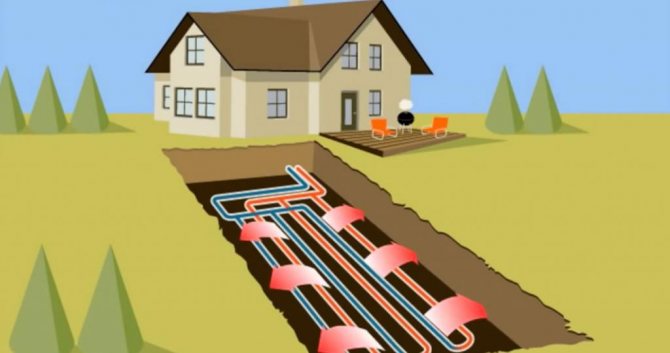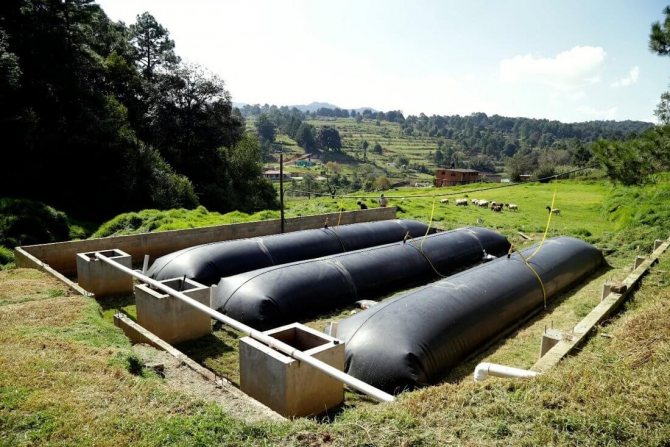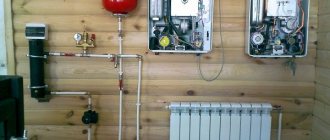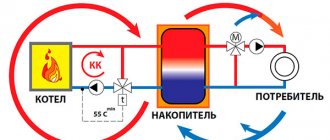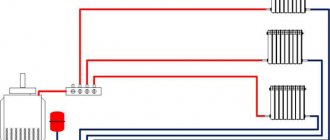The rise in energy prices stimulates the search for more efficient and cheaper types of fuel, including at the household level. Most of all craftsmen - enthusiasts are attracted by hydrogen, whose calorific value is three times higher than that of methane (38.8 kW versus 13.8 from 1 kg of substance). The method of extraction at home, it would seem, is known - the splitting of water by electrolysis. In reality, the problem is much more complicated. Our article has 2 goals:
The power sector has probably produced more electricity with gas than coal. Both fuels currently account for about 33 percent, according to federal energy sources. However, gas fuel is not controversial. Production from shale formations using horizontal drilling and hydraulic fracturing, which has provided much of the production growth over the past decade, has polluted some waterways and caused earthquake problems.
M of gas per day on average last year. It didn't have to be this way. In recent years, the coal industry has been beaten by competition from cheap gas and clean regulations that have increased the cost of burning dirty black rock. The gas trend is here to stay. Generators are adding more gas installations as older coal-fired power plants retire, Costas said.
- analyze the question of how to make a hydrogen generator with minimal costs;
- consider the possibility of using the installation for heating a private house, refueling a car and as a welding machine.
Hydrogen, aka hydrogen, - the first element of the periodic table - is the lightest gaseous substance with high chemical activity. During oxidation (that is, combustion), it releases a huge amount of heat, forming ordinary water. Let us characterize the properties of the element, formulating them in the form of theses:
With electricity and gas, you pay for two main things. The energy you use is wasting energy in your home. ... Only over a third of what you pay is getting energy for you - the rest is what you use. A small portion of what you pay also goes to finance the work of energy industry regulators.
* The numbers we do not have do not highlight transmission costs from power charges. There are a number of processes for securing your home - and you end up paying for these processes in your bill. Your bill covers the generation, transmission, distribution and retail of electricity. It also includes a small levy that is administered by the Electricity Authority, which regulates and regulates the electricity industry.
For reference. Scientists, who first split the water molecule into hydrogen and oxygen, called the mixture an explosive gas because of its tendency to explode. Subsequently, it received the name of Brown's gas (by the name of the inventor) and began to be designated by the hypothetical formula NNO.
First, your strength must be generated. In New Zealand, this is mainly from hydropower, geothermal energy and natural gas. Transmission is the massive movement of energy across the country. Power is transmitted from the power plant to a distribution point near your home.
The main transmission channel is vector driven. From there, your power is distributed.Distribution of energy from the point of delivery or distribution to your property is handled by local distribution companies - either lines or grid companies, or, in the case of gas, gas grid companies.
Previously, airship cylinders were filled with hydrogen, which often exploded.
From the above, the following conclusion suggests itself: 2 hydrogen atoms easily combine with 1 oxygen atom, but they part very reluctantly. The chemical oxidation reaction proceeds with a direct release of thermal energy in accordance with the formula:
Electricity transmission and distribution costs are usually paid by your retailer and included as part of what they charge you. In some cases, retailers separate the different components of your bill so you can see what you are paying for each portion. In several areas, the grid company bills directly for distribution costs.
Gas transmission and distribution costs are included in the wholesale price when retailers purchase gas. The share of your bill covering transmission and distribution is higher for gas than for electricity. Your retailer is the energy company you do business with that sends you your invoice.
2H 2 + O 2 → 2H 2 O + Q (energy)
Here lies an important point that will be useful to us in further debriefing: hydrogen reacts spontaneously from ignition, and heat is released directly. To separate a water molecule, energy will have to be spent:
2H 2 O → 2H 2 + O 2 - Q
This is an electrolytic reaction formula that characterizes the process of splitting water by supplying electricity. How to implement this in practice and make a hydrogen generator with your own hands, we will consider further.
Retailers buy electricity generated by generating companies in a complex trading system. For electricity, this is called the New Zealand electricity market. It is at this level of electricity trading that you will hear terms such as "wholesale market" and "spot pricing". The wholesale price that retailers buy electricity at can greatly affect the price you pay.
Electric generators sell electricity on the wholesale market. It is bought by sellers who then sell it to you. While the price of electricity is set every half hour and varies based on demand, most retailers sell it to you at a set price and usually arrange buy-sell contracts known as “hedges” with wholesalers.
Creation of a prototype
So that you understand what you are dealing with, we first suggest assembling the simplest generator for the production of hydrogen at minimal cost. The design of a homemade installation is shown in the diagram.
There are some retailers who will sell you electricity on a contract price basis - so what you pay depends on changes in the spot price. There is a price margin for the retailer, but since the retailer does not have to cover fluctuations in the spot price, the margin is less than for the specified contract price. So on average, buying locally priced is cheaper but more risky than priced contracts.
The owners of the gas field pay royalties to the government and then sell the gas to wholesalers, who sell it to retailers. Gas and electricity markets are levied to pay the regulatory authorities that control them and to provide services to resolve consumer complaints. Energy industry regulation fees are extremely low.
What a primitive electrolyser consists of:
- reactor - glass or plastic container with thick walls;
- metal electrodes immersed in a water reactor and connected to a power source;
- the second reservoir acts as a water seal;
- pipes for the removal of HHO gas.
An important point. The electrolytic hydrogen plant operates on direct current only. Therefore, use the AC adapter, car charger or battery as the power source. An AC generator will not work.
Compare your electricity bill and save
Find out who is supplying your new property and how to get the best gas and electricity deal. A switch supplier is a quick and easy way to reduce household costs. With so many tasks on your moving home checklist, remembering to notify your current energy supplier - and figuring out who your new gas and electricity supplier is - will probably be the last in your mind.
Find out who is supplying gas and electricity to the new property
The good news is that these two tasks are not as hard to mark your list as you might think. If you cannot get this information from your current tenants, you can make a couple of calls to find out who your new energy provider is. You can call your electricity distribution area to find out who is supplying your electricity. The numbers are listed below.
The principle of the electrolyzer is as follows:
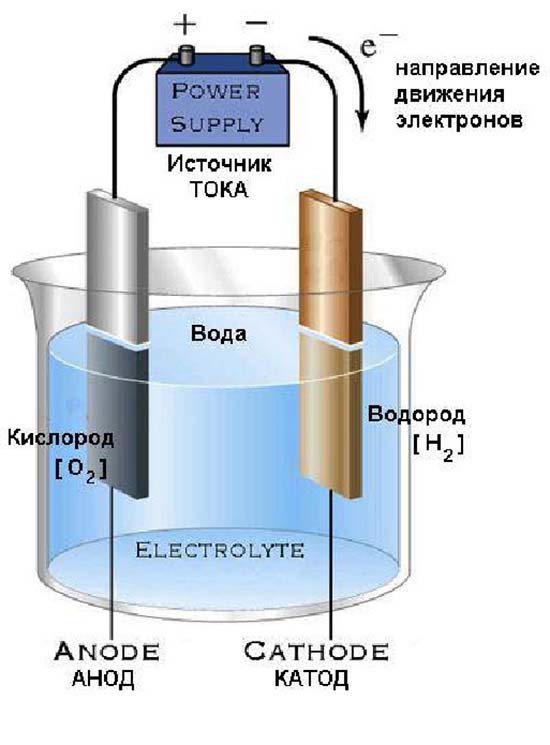
To make the generator design shown in the diagram with your own hands, you will need 2 glass bottles with wide necks and lids, a medical dropper and 2 dozen self-tapping screws. The complete set of materials is shown in the photo.
Thermogenerators. History and theory
A moving day is a stressful time, but remember to take care of a few gas and electricity details while you load your boxes. You will be grateful later when you receive new invoices in order. Now that you've moved on to your new property, you're almost done!
Why pay more for the same energy?
Contact your supplier for new property to inform them of your move and provide your testimony.
- Take the counter reading in the new property.
- Do this as soon as possible to ensure an accurate first count.
Find and switch to the best energy deal in minutes.
Special tools will require a glue gun to seal the plastic lids. The manufacturing procedure is simple:
To start the hydrogen generator, pour salted water into the reactor and turn on the power source. The beginning of the reaction will be marked by the appearance of gas bubbles in both containers. Adjust the voltage to the optimum value and ignite the Brown gas coming out of the dropper needle.
Frequently Asked Questions About Moving Home and Energy Suppliers
What if my new property has a prepayment meter
Learn more about the economy of 7 meters, including how your meter type is through your supplier. What if my new property is not gas or electricity related. If your new property is not connected to the gas or electricity network, you will need to request a connection from the gas vehicle operator or distribution network operator.
How to take readings from a gas meter or readings from an electricity meter?
Alternatively, you can contact your preferred provider first and request a connection through them. A connection fee will be charged. If you've never read a gas or electricity meter, this may seem daunting. But don't worry, we have a step-by-step video to help you find your meters, if you don't know where the property is, determine which meters you have and of course read the meter.
The second important point.Too high a voltage cannot be applied - the electrolyte, heated to 65 ° C or more, will begin to evaporate rapidly. Due to the large amount of water vapor, the burner cannot be ignited. For details of assembling and starting an impromptu hydrogen generator, see the video:
Renters Switching Guide Even if you rent you, you can still switch energy.
- Tenants can ask their landlord to switch energy.
- Find an energy supplier.
- You get the best deal for your gas and electricity.
Not too long ago, natural gas - the fuel your hot shower probably gave you this morning - was perceived as a cleaner "bridge" fuel because it was less polluted than other alternatives. For some purposes, it still exists, such as when it replaces diesel in buses.
The device and principle of operation of the gas generator for electricity


Electricity generator runs on natural or liquefied gas
A gas powered home generator is often used for heating. Its device is no different from similar models that run on other types of fuel. It contains the following parts:
- Housing. It can be rectangular or cylindrical. It is usually made from sheet steel.
- The combustion chamber. Since the device runs on gas, it does not require a container to load fuel. This unit is manufactured from heat resistant steel.
- Compressor. It is needed to pump air into the furnace. Without this, the fuel will not ignite.
- Turbine. Heated and expanded air enters it.
There is no fuel tank in the unit, as it runs on liquefied or natural gas. A combustion chamber is installed instead. The principle of operation of the apparatus is simple. First, the air enters the compressor, is compressed and sent to the combustion chamber, where it is mixed with a small amount of fuel. The mixture ignites and is brought to a high temperature. Gas enters the turbine and makes it rotate, generate electricity. Part of it is spent on the operation of the household gas generator itself. The combustion products are discharged through the exhaust pipe.
About Meyer's hydrogen cell
If you have made and tested the above design, then by the burning of the flame at the end of the needle, you probably noticed that the productivity of the installation is extremely low. To get more oxyhydrogen gas, you need to make a more serious device, called a Stanley Meier cell in honor of the inventor.
But in our homes, some believe that natural gas should be phased out in favor of electrical appliances for climate reasons. There is already a tendency to switch from gas to electricity. S. is fully electric. This trend is strongest in the south. When it is burnt, or especially if it leaks out unburned, natural gas contributes to climate change.
Plate reactor
Thomsen and several others have recommended a type of heating and air conditioning known as heat pumps. He believes that the future is electrification of homes. He recommends them for people who have solar systems on their roofs, as electricity is paid for.
The principle of operation of the cell is also based on electrolysis, only the anode and cathode are made in the form of tubes inserted into one another. The voltage is supplied from the pulse generator through two resonant coils, which reduces the current consumption and increases the performance of the hydrogen generator. The electronic circuit of the device is shown in the figure:
He installs them in affordable apartments all over California. “A refrigerator uses more electricity for heating and cooling than a heat pump in an apartment,” Armstrong said. But gas utilities say natural gas helps maintain energy availability.Many people struggle to pay their utility bills and cannot risk it.
True, it is even more expensive than gas in most of the applications we use now, he said. When people switch from gas to electricity, sometimes they have to increase the electrical maintenance in the circuit breaker box and the other cost. Harris agrees that the electricity is getting cleaner. But he said that installing wind turbines and solar farms also requires the use of fossil fuels. They require a lot of concrete, and the energy for producing and pouring concrete comes from fossil fuels.
Note. Details about the operation of the scheme are described on the resource https://www.meanders.ru/meiers8.shtml.
To make a Meyer cell, you will need:
- a cylindrical body made of plastic or plexiglass, craftsmen often use a water supply filter with a cover and nozzles;
- stainless steel tubes with a diameter of 15 and 20 mm and a length of 97 mm;
- wires, insulators.
Research still shows that wind and solar farms tend to make up for this fossil fuel use not too long after they start operating. About 11% of Germany's electricity was generated by gas-fired power plants. In addition, gas-fired power plants achieve very high efficiency rates thanks to sophisticated technology, converting most of the energy from natural gas into electricity. By comparison, coal-fired power plants can achieve 50% efficiency at best.
Atmospheric lighting sources
Gas-fired power plants are becoming more efficient thanks to the improvements made in turbines over the past few decades. They are powered by burning natural gas, which heats incoming air and drives turbines, in a similar process to a jet plane. The rotational motion is transmitted through the shaft to an electric generator, which generates electricity like a bicycle dynamo.
Stainless tubes are attached to a dielectric base, wires connected to the generator are soldered to them. The cell consists of 9 or 11 tubes, placed in a plastic or plexiglass case, as shown in the photo.
The elements are connected according to all the scheme known on the Internet, which includes an electronic unit, a Meyer cell and a water seal (technical name is a bubbler). For safety reasons, the system is equipped with critical pressure and water level sensors. According to home craftsmen, such a hydrogen plant consumes a current of about 1 ampere at a voltage of 12 V and has sufficient performance, although there are no exact figures.
Schematic diagram of switching on the electrolyzer
Prefabricated Power Plant Representatives
Note that these options - a thermoelectric generator and a gas generator are now priorities, therefore, ready-made stations for use, both domestic and industrial, are being produced.
Below are a few of them:
- Indigirka stove;
- Tourist oven "BioLite CampStove";
- Power plant "BioKIBOR";
- Power plant "Eco" with gas generator "Cube".
An ordinary household solid fuel stove (made according to the type of the "Burzhaika" stove), equipped with a Peltier thermoelectric generator.
Perfect for summer cottages and small houses, since it is compact enough and can be transported in a car.
The main energy during the combustion of firewood is used for heating, but at the same time the existing generator also allows you to obtain electricity with a voltage of 12 V and a power of 60 W.
Oven "BioLite CampStove".
It also uses the Peltier principle, but it is even more compact (weight is only 1 kg), which allows you to take it on hiking trips, but the amount of energy generated by the generator is even less, but it will be enough to charge a flashlight or phone.
A thermoelectric generator is also used, but this is already an industrial version.
The manufacturer, on request, can manufacture a device that provides an output of electricity with a capacity of 5 kW to 1 MW. But this affects the size of the station, as well as the amount of fuel consumed.
For example, an installation that produces 100 kW consumes 200 kg of firewood per hour.
But the Eco power plant is a gas generator. Its design uses a gas generator "Cube", a gasoline internal combustion engine and an electric generator with a capacity of 15 kW.
In addition to industrial ready-made solutions, you can separately buy the same Peltier thermoelectric generators, but without a stove, and use it with any heat source.
Plate reactor
A high-performance hydrogen generator capable of ensuring the operation of a gas burner is made of stainless plates 15 x 10 cm in size, the number is from 30 to 70 pieces. Holes are drilled into them for tightening pins, and a terminal is cut out in the corner for connecting the wire.
In addition to stainless steel sheet grade 316, you will need to buy:
- rubber with a thickness of 4 mm, resistant to alkali;
- end plates made of plexiglass or textolite;
- tie studs M10-14;
- check valve for gas welding machine;
- water filter for a water seal;
- corrugated stainless steel connecting pipes;
- potassium hydroxide in powder form.
The plates must be assembled into a single block, insulating from each other with rubber gaskets with a cut out center, as shown in the drawing. Pull the resulting reactor tightly with pins and connect it to the electrolyte pipes. The latter comes from a separate container equipped with a lid and shut-off valves.
Note. We tell you how to make a flow-through (dry) type electrolyzer. It is easier to manufacture a reactor with immersed plates - there is no need to put rubber gaskets, and the assembled block is lowered into a sealed container with electrolyte.
Wet type generator circuit
The subsequent assembly of a generator producing hydrogen is carried out according to the same scheme, but with differences:
- A reservoir for electrolyte preparation is attached to the body of the apparatus. The latter is a 7-15% solution of potassium hydroxide in water.
- Instead of water, a so-called deoxidizer is poured into the bubbler - acetone or an inorganic solvent.
- A non-return valve must be installed in front of the burner, otherwise, when the hydrogen burner is smoothly turned off, the back blow will rupture the hoses and the bubbler.
The easiest way to power the reactor is to use a welding inverter; there is no need to assemble electronic circuits. How does Brown's homemade gas generator work, the home master will tell in his video:
Advantages and disadvantages


The generator can be connected to the main gas pipe
Gas generators for home are convenient because they use different types of fuel, which are much cheaper than gasoline. They have the following advantages:
- the ability to connect to a cylinder and a main pipe;
- the use of the device for generating electricity, heating a room, receiving hot water;
- durability, since when using gas, the wear of the internal parts of the generator is minimal;
- environmental Safety;
- profitability.
However, there are also disadvantages: gas supply is not available everywhere. When connecting to the backbone, permission from a special service is required.
Despite the costly installation process, the use of gas generating units is justified in the event of frequent power outages or its complete absence. If it is impossible to use the main fuel system, you can use cylinders.
When choosing a device, the conditions for its use are taken into account, as well as the tasks that the unit must solve.
Is it profitable to get hydrogen at home?
The answer to this question depends on the scope of application of the oxygen-hydrogen mixture. All drawings and diagrams published by various Internet resources are designed to release HHO gas for the following purposes:
- use hydrogen as fuel for cars;
- smokelessly burn hydrogen in heating boilers and furnaces;
- apply for gas welding.
The main problem that negates all the advantages of hydrogen fuel: the cost of electricity for the release of a pure substance exceeds the amount of energy obtained from its combustion. Whatever the adherents of utopian theories claim, the maximum efficiency of the electrolyzer reaches 50%. This means that 2 kW of electricity is consumed per 1 kW of heat received. The benefit is zero, even negative.
Let's remember what we wrote in the first section. Hydrogen is a highly active element and reacts with oxygen on its own, generating a lot of heat. Trying to split the stable water molecule, we cannot bring energy directly to the atoms. The splitting is carried out by electricity, half of which is dissipated for heating the electrodes, water, transformer windings, and so on.
Important background information. The specific heat of combustion of hydrogen is three times higher than that of methane, but by weight. If we compare them by volume, then when 1 m³ of hydrogen is burned, only 3.6 kW of thermal energy will be released versus 11 kW for methane. After all, hydrogen is the lightest chemical element.
Now consider the oxyhydrogen gas obtained by electrolysis in a homemade hydrogen generator as fuel for the above needs:
For reference. In order to burn hydrogen in a heating boiler, the structure will have to be thoroughly redesigned, since a hydrogen burner can melt any steel.
How to determine the thermoelectric power of a metal
The thermoelectric power of a metal is determined in relation to platinum. For this, a thermocouple, one of the electrodes of which is platinum (Pt), and the other the tested metal, is heated to 100 degrees Celsius. The resulting value in millivolts for some metals is shown below. Moreover, it should be noted that not only the magnitude of the thermopower changes, but also its sign with respect to platinum.
In this case, platinum plays the same role as 0 degrees on the temperature scale, and the entire thermopower scale looks like this:
- Antimony +4.7
- Iron +1.6
- Cadmium +0.9
- Zinc +0.75
- Copper +0.74
- Gold +0.73
- Silver +0.71
- Tin +0.41
- Aluminum +0.38
- Mercury 0
- Platinum 0
Platinum is followed by metals with a negative thermoelectric power:
Using this scale, it is very easy to determine the value of the thermoelectric power developed by a thermocouple composed of various metals. To do this, it is enough to calculate the algebraic difference in the values of the metals from which the thermoelectrodes are made. For example, for antimony - bismuth pair, this value will be +4.7 - (- 6.5) = 11.2 mV. If an iron - aluminum pair is used as electrodes, then this value will be only +1.6 - (+0.38) = 1.22 mV, which is almost ten times less than that of the first pair.
If the cold junction is maintained at a constant temperature, for example 0 degrees, then the thermoelectric power of the hot junction will be proportional to the temperature change, which is used in thermocouples.
Simple homemade generator
Despite the fact that these devices are not popular now, at the moment there is nothing more practical than a thermo-generating unit, which is quite capable of replacing an electric stove, a lighting lamp on a trip, or help out, if the charging to a mobile phone breaks down, to power a power window. Such electricity will also help at home in the event of a power outage. It can be obtained for free, one might say, for a ball.
So, to make a thermoelectric generator, you need to prepare:
- Voltage regulator;
- Soldering iron;
- Any body;
- Cooling radiators;
- Thermal paste;
- Peltier heating elements.
Assembling the device:
- First, the body of the device is made, which should be without a bottom, with holes at the bottom for air and at the top with a stand for the container (although this is not necessary, since the generator may not work on water);
- Next, a Peltier element is attached to the body, and a cooling radiator is attached to its cold side through thermal paste;
- Then you need to solder the stabilizer and the Peltier module, according to their poles;
- The stabilizer should be very well insulated so that moisture does not get there;
- It remains to check its work.
By the way, if there is no way to get a radiator, you can use a computer cooler or a car generator instead. Nothing terrible will happen from such a replacement.
The stabilizer can be purchased with a diode indicator that will give a light signal when the voltage reaches the specified value.
How thermogenerators were created
Already in the middle of the 19th century, numerous attempts were made to create thermogenerators - devices for generating electrical energy, that is, for powering various consumers. Batteries made of series-connected thermoelements were supposed to be used as such sources. The design of such a battery is shown in Fig. 2.
Fig. 2. Thermopile, schematic device
The first thermoelectric battery was created in the middle of the 19th century by physicists Oersted and Fourier. Bismuth and antimony were used as thermoelectrodes, just the very pair of pure metals with the maximum thermoelectric power. Hot junctions were heated with gas burners, and cold junctions were placed in a vessel with ice. In the course of experiments with thermoelectricity, thermopiles were later invented, suitable for use in some technological processes and even for lighting. An example is the Clamont battery, developed in 1874, which was quite powerful for practical purposes: for example, for galvanic gilding, as well as for use in printing houses and workshops for solar engraving. Around the same time, the scientist Noé was also engaged in the study of thermopiles, his thermopiles were also widely distributed at one time.
But all these experiments, although successful, were doomed to failure, since thermopiles created on the basis of thermoelements from pure metals had a very low efficiency, which hindered their practical application. Pure metal vapors have an efficiency of only a few tenths of a percent. Semiconductor materials have much higher efficiency: some oxides, sulfides and intermetallic compounds.
Properties of thermoelectric materials
The results allow us to hope that in the near future, completely new environmentally friendly sources of electrical energy will be obtained. At the molecular level, a combination of cobalt, nickel, tin and manganese has been produced. The result is a multiferrite alloy with completely new properties. It combines an optimal combination of electrical, elastic and magnetic properties. Due to this, there is a transformation of materials from one to another, and the effect of temperature leads to reversible phase transformations. During a demonstration of this material, it, while absorbing ambient heat, caused an unexpected generation of electricity in the inductor surrounding it.
Thus, the obtained material can be of great practical importance in the future. For example, the conversion of heat generated by a car can be used to charge batteries.
Semiconductor thermocouples
A true revolution in the creation of thermoelements was made by the works of Academician A.I. Ioffe.In the early 30s of the XX century, he put forward the idea that with the help of semiconductors it is possible to convert thermal energy, including solar energy, into electrical energy. Thanks to the research carried out, already in 1940, a semiconductor photocell was created for converting solar light energy into electrical energy. The first practical application of semiconductor thermoelements should be considered, apparently, "partisan bowler hat", which made it possible to provide power to some portable partisan radio stations.
The elements of constantan and SbZn served as the basis of the thermogenerator. The temperature of the cold junctions was stabilized by boiling water, while the hot junctions were heated by a fire flame, thus providing a temperature difference of at least 250 ... 300 degrees. The efficiency of such a device was no more than 1.5 ... 2.0%, but the power to power the radio stations was quite enough. Of course, in those war times, the design of the "bowler hat" was a state secret, and even now many forums on the Internet are discussing its design.
Use of alternative energy systems
The search for alternative energy sources is a powerful global vector that determines the future of energy throughout the world. Already today, the following are used for heating and electricity in buildings:
- solar energy;
- wind energy;
- energy derived from the earth (geothermal energy);
- energy of the seas and oceans;
- energy of inland waters;
- biomass energy;
- biogas energy.
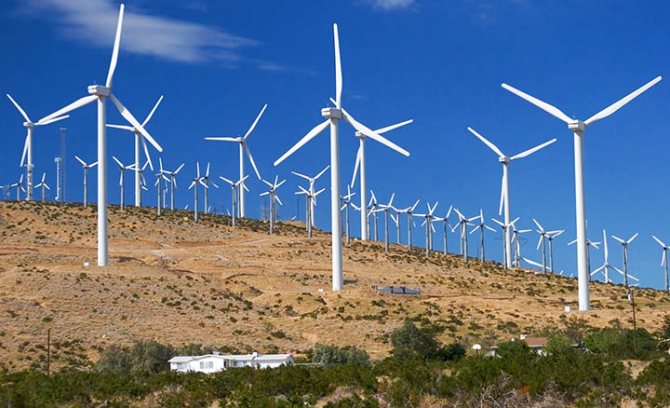

Renewable energy and its sources
Basically, alternative energy sources are divided into renewable and synthetic. Their difference lies in the fact that renewable ones use various natural phenomena to generate energy, while synthetic ones are built on the synthesis of fuel, that is, in fact, the replacement of natural hydrocarbons with synthetic materials.
Electricity demand and prices are growing not only in our country, but all over the world. This is an inevitable price to pay for the development of modern technologies. And the term "renewable sources" is not entirely correct - all because the demand is many times greater than the reproduction of these sources: every year humanity consumes more and more oil, gas and coal, deposits are depleted, there are no more of them.
All this leads to the fact that in the coming decades there will be an acute shortage of fossil-energy resources all over the world.
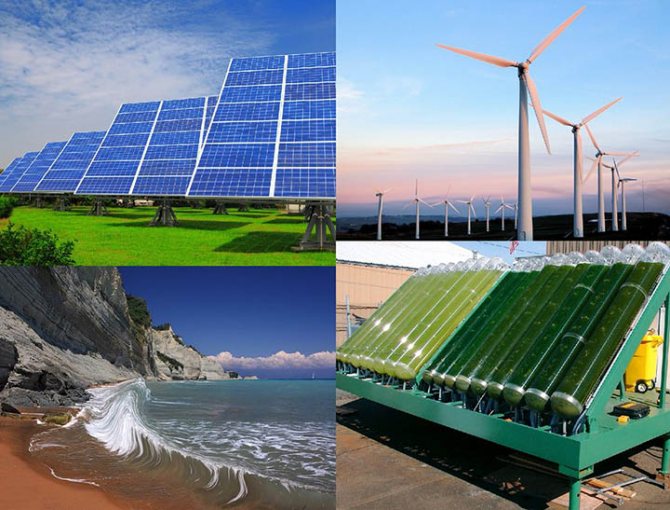

What does this mean for private home owners?
This means it's time to start preparing for a sharp rise in energy prices. Yes, this will not happen today and not immediately. But it is better to be ready at this moment, insulate the house, replace the boiler, install new systems of energy sources, try to make your home as energy efficient as possible.
Today, in private houses, renewable energy from alternative sources can be obtained by installing:
- Solar panels (solar collectors);
- Heat pump;
- Ventilation recuperators;
- Wind turbines;
- Installation of external power supply systems (https://saen.com.ua/vneshnee-elektrosnabzhenie.html).
Given our cold and harsh continental climate, one source for heating a home may not be enough. And here you need to look at the combinations:
- If your area has many sunny days, a combination of solar panels and traditional boiler heating may be considered. During the day, the sun will save you fuel, and at night (while the panels are charging) the house will be heated by a boiler;
- If there are frequent and strong winds in your area, then it is definitely worth considering installing a windmill. You can combine wind energy with boiler heating in the same way as described above;
- For a more rational use of energy in warmer regions, one can generally consider replacing traditional boilers with biomass boilers, heat pumps and heat recovery systems from ventilation.


Most importantly, alternative energy sources will provide heating stability for your home. After all, it is no secret to anyone that power outages are quite frequent in many Russian settlements and villages.
Solar energy
The main element of a home solar power plant is photovoltaic cells made from silicon wafers. Under the influence of solar radiation, they generate electricity, moreover, completely free of charge.
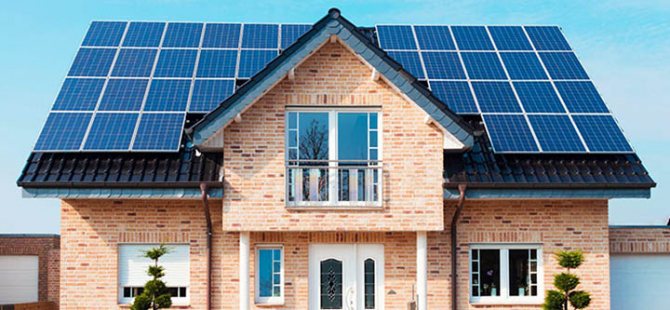

Solar collectors can also be used as a secondary heat transfer medium. For example, they can be used to maintain constant hot water in the house. Of course, it is necessary to correctly design such an installation, take into account the number of all residents and their need for hot water, as well as the level of sunlight entering the roof of the house. Ideally, collectors should be installed on the south side of the house.
Wind energy


Installing a home wind turbine is also an interesting, but so far expensive solution for most homeowners. But such a system is less dependent on the weather and the number of sunny days - the windmills work constantly, changing only the torque.
Recuperator and heat recovery
A recuperator is a special device installed in the ventilation system, the main function of which is to return the warm air coming from the house back to the house.
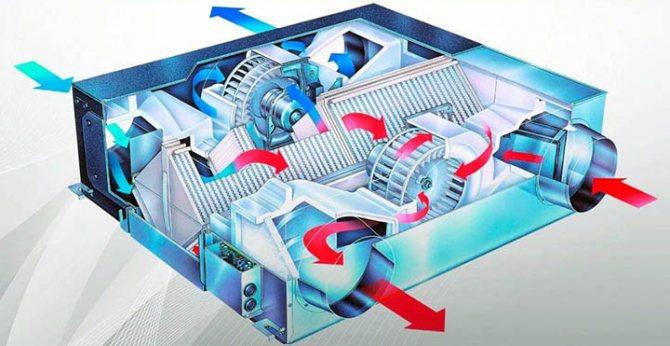

There are many models and types of recuperators on the market. They are relatively inexpensive. For the best effect, it is recommended to choose devices with maximum efficiency (over 90%) and consumption of no more than 0.35 W of power per 1 m3 of air.
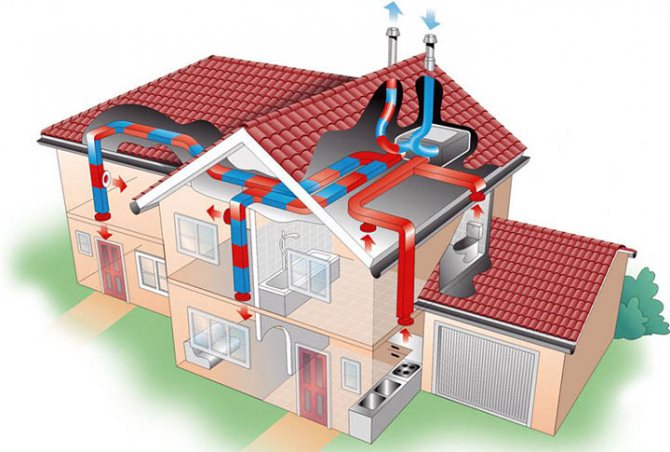

Renewable Energy Fusion: Hybrid Solutions
More than one alternative energy source can be combined in a home. The most popular solution is hybrid collectors using photovoltaic cells and solar collectors. At the same time, they heat water and generate electricity.
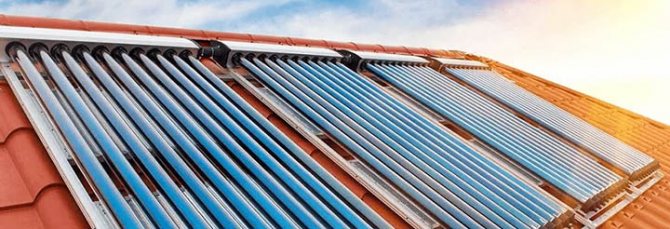

Energy and heat can even be extracted from wastewater today. There are so-called hydrogen sulfide heating systems on the market. They collect warm water previously used for washing or washing dishes and transfer it to the home heating system. This system consists of a filter, a special waste water tank and a pump.
Which device to choose for your home is up to you. If the budget is limited and you are not sure that the device will work efficiently, it is recommended to start small: installing one solar panel or recuperator. And there is already to look.
Can alternative energy systems completely replace the boiler?
No, they cannot yet. Alternative energy sources are often criticized for their low power - neither solar panels, nor wind farms, nor recuperators, of course, can completely solve the problem of heating and electricity in a private house. Or they can, but it will be too expensive.
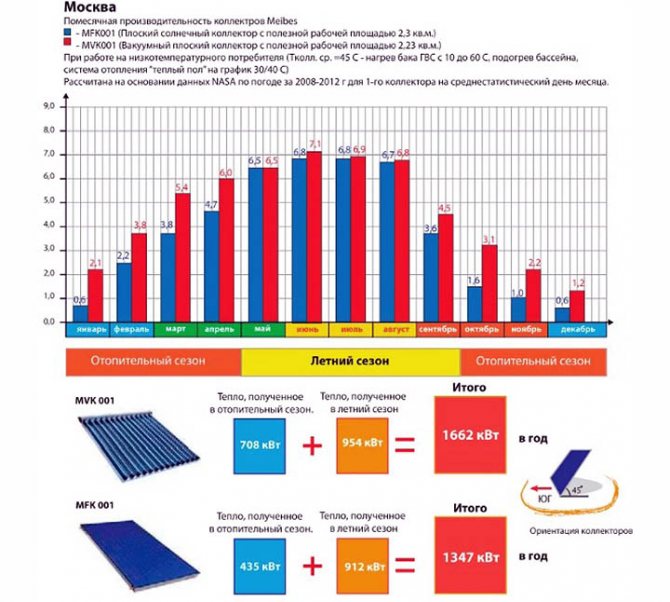

Nevertheless, another fact is also obvious - that such devices are already becoming an important component of the engineering of many houses, since many owners realized that such systems can save a lot on gas and electricity bills.
Household thermogenerator
Already in the post-war fifties, Soviet industry began to produce the TGK-3 thermogenerator. Its main purpose was to power battery-operated radios in non-electrified rural areas. The generator power was 3 W, which made it possible to power battery receivers such as Tula, Iskra, Tallinn B-2, Rodina-47, Rodina-52 and some others.
The appearance of the TGK-3 thermogenerator is shown in Fig. 3.
Fig. 3. Thermogenerator TGK-3
Thermogenerator design
As already mentioned, the thermogenerator was intended for use in rural areas, where lightning kerosene lamps were used for lighting. Such a lamp, equipped with a thermogenerator, became not only a source of light, but also electricity. At the same time, additional fuel costs were not required, because exactly that part of the kerosene that just flew into the pipe was turned into electricity.In addition, such a generator was always ready for work, its design was such that there was simply nothing to break in it. The generator could just lie idle, work without load, and was not afraid of short circuits. The generator's lifespan, compared to galvanic batteries, seemed like eternal.
The role of the chimney in the lightning kerosene lamp is played by the elongated cylindrical part of the glass. When the lamp was used in conjunction with a thermogenerator, the glass was made shortened, and a metal heat transmitter 1 was inserted into it, as shown in Fig. four.
Fig. 4. Kerosene lamp with thermoelectric generator
The outer part of the heat transmitter has the shape of a multifaceted prism on which thermopiles are installed. To increase the efficiency of heat transfer, the heat exchanger had several longitudinal channels inside. Passing through these channels, hot gases went into the exhaust pipe 3, simultaneously heating the thermopile, more precisely, its hot junctions. An air-cooled radiator was used to cool the cold junctions. It consists of metal ribs attached to the outer surfaces of the thermopile blocks.
Thermogenerator - TGK3 consisted of two independent sections. One of them produced a voltage of 2V at a load current of up to 2A. This section was used to obtain the anode voltage of the lamps using a vibration transducer. Another section at a voltage of 1.2V and a load current of 0.5A was used to power the filaments of the lamps.
It is easy to calculate that the thermogenerator had a power not exceeding 5 watts, but it was quite enough for the receiver, which made it possible to brighten up long winter evenings. Now, of course, it seems just ridiculous, but in those distant times, such a device was undoubtedly a miracle of technology.
DIY making
You can make a thermoelectric generator with your own hands. For this purpose, some elements are required:
- Module capable of withstanding temperatures up to 300-400 ° C.
- A boost converter whose purpose is to receive a continuous voltage of 5 V.
- Heater in the form of a fire, candle or some kind of miniature stove.
- Cooler. Water or snow are the most popular options at hand.
- Connecting elements. For this purpose, you can use mugs or pots of different sizes.
The wires between the transmitter and the module must be insulated with a heat-resistant compound or conventional sealant. It is necessary to assemble the device in the following sequence:
- Leave only the case from the power supply.
- Glue the Peltier module to the radiator with the cold side.
- Having previously cleaned and polished the surface, you need to glue the element on the other side.
- From the input of the voltage converter, it is necessary to solder the wires to the outputs of the plate.
In this case, the thermogenerator for correct operation must be endowed with the following characteristics: output voltage - 5 volts, type of output for connecting the device - USB (or any other, depending on preferences), the minimum load power should be 0.5 A. In this case, you can use any Type of fuel.
Checking the mechanism is quite simple. You can put several dry and thin twigs inside. Set them on fire, and after a few minutes connect some device, for example, a phone for recharging. It is not difficult to assemble a thermogenerator. If everything is done correctly, then it will last more than one year in trips and hikes.
